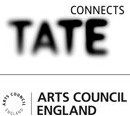David Hockney: 1960 - 1968: A Marriage of Styles
Hockney in the 60s was that rare thing – an artist at the forefront of the avant-garde of the day, and a well-known public figure. With his Yorkshire accent, bleached blond hair, owlish glasses and frank homosexuality he stood out at the Royal College of Art in London.
This exhibition offers a portrait of the artist as a young man, in London and Los Angeles. His work of the time is marked by a unique pictorial wit. It is informed by the books he was reading, places he was visiting, people he desired, lifestyles he aspired to - and the art that inspired him.
At this time Hockney was playing with a multitude of styles. His breakthrough works were inspired by the abstract painting of the time. But they departed from it with their use of autobiographical messages, often code that referred to his current crushes, including his Doll Boy, Cliff Richard.
It is an exhibition full of allusions – to the homoerotic poetry of Walt Whitman and CP Cavafy, to Egyptian archaeology, to Modernism, children’s drawings, furtive graffiti and the flat perfection of commercial art.
Hockney was living mostly in Los Angeles at the end of this period. His paintings of swimming pools, male sunbathers and manicured lawns are iconic and stylised. They are the closest he gets to Pop Art. He had abandoned the use of text, but not the sense of paintings as signs. His work is never simply a window on reality. Instead it makes you aware that you are looking at a fiction composed of elements of reality. In that sense, he is an important forerunner of what would become known as Postmodernism.
Hockney himself is now painting in his native Yorkshire. He continues to marry styles – on canvas, in photography and on his cherished iPhone.
Exhibition:
David Hockney: 1960 - 1968: A Marriage of StylesDates:
14 Nov 2009 – 24 Jan 2010Curator:
Alex Farquharson
Supported by:

